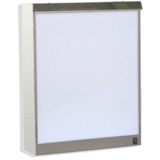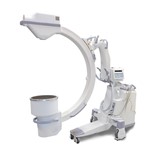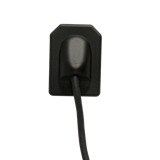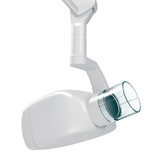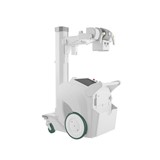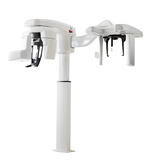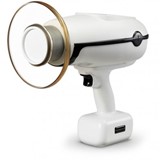Explore mobile and fixed C-Arm models for sale in Australia. Find the best units, setup advice, financing tips, and imaging insights for radiology buyers.
Key takeaways
- C-Arm X-Ray price range in Australia: Expect to pay between $55,000 and $350,000+, depending on whether you're buying mini, compact, or full-size mobile units.
- Used vs. new systems: Refurbished models can offer up to 40% savings compared to new ones—great for facilities expanding on a budget.
- Operating costs: Include regular servicing (~$3,000–$6,000 annually) and parts replacement like image intensifiers (from $10,000).
- Compliance matters: All C-Arms must comply with ARPANSA’s Radiation Protection Series, TGA ARTG registration, and relevant state-specific radiation licensing.
- Warranty expectations: Look for 12 to 24-month warranties, with options for extended coverage.
- Financing: Equipment finance terms from lenders like NAB or Westpac can start from 6.5% p.a. with medical equipment loan terms of 3 to 7 years.
- Most common applications: Orthopaedics, pain management, urology, and vascular procedures are leading use cases in Australian clinics and hospitals.
Introduction: Why buying a C-Arm matters
A C-Arm X-Ray machine is a crucial diagnostic imaging device, particularly in surgical, orthopaedic, pain management, and emergency care settings. These mobile fluoroscopy systems provide real-time, high-resolution X-ray imaging, enhancing accuracy during procedures.
But buying the right C-Arm in Australia involves more than choosing a brand—it requires understanding compliance laws, total cost of ownership, warranty options, and long-term servicing needs.
This guide breaks down what you need to know to make a confident and informed decision tailored to Australian conditions.
Types of C-Arm X-Ray machines
C-Arms vary significantly based on their application, imaging power, and mobility.
1. Mini C-Arms
- Best for: Hand, foot, and extremity imaging.
- Typical price: $55,000 – $120,000 (new)
2. Compact C-Arms
- Best for: Clinics or day surgeries with moderate imaging needs.
- Typical price: $100,000 – $180,000
3. Full-Size C-Arms
- Best for: Hospitals and high-volume surgical centres.
- Typical price: $180,000 – $350,000+
4. 3D C-Arms / Cone Beam CT (CBCT)
- Best for: Intraoperative 3D imaging.
- Typical price: $300,000 – $500,000+
New vs refurbished C-Arm systems
New units
- Pros: Latest technology, full warranty, TGA registration.
- Cons: High upfront cost.
Refurbished units
- Pros: Cost savings of 30–40%, faster delivery.
- Cons: Shorter warranties, potential for higher ongoing maintenance.
Refurbished units must still meet Therapeutic Goods Administration (TGA) requirements under the ARTG (Australian Register of Therapeutic Goods).
Price breakdown: What influences cost?
The price of a C-Arm in Australia can vary significantly based on several core factors. Understanding these elements will help you budget more effectively and avoid unexpected costs.
1. Detector technology
- Flat panel detectors are becoming the industry standard due to better image quality and reduced radiation dose.
- Expect to pay $20,000 to $50,000 more for a flat panel model compared to a traditional image intensifier system.
2. Dose reduction features
- Advanced radiation safety features such as pulsed fluoroscopy, last image hold, and beam filtration can add $10,000 to $20,000 to the base price.
- These features are highly recommended in facilities with high patient volumes or where staff exposure is a concern.
3. Software and imaging modes
- Specialised software for vascular, cardiac, or spinal imaging often comes at a premium.
- Add-on software packages typically cost an additional $5,000 to $30,000, depending on the manufacturer and capabilities.
4. Detector size and resolution
- Larger detectors and higher-resolution imaging improve clinical flexibility but increase costs.
- A larger detector size may raise the purchase price by $10,000 to $40,000, especially for full-body imaging capabilities.
5. Brand reputation and support
- Well-established brands typically command higher prices due to their proven track record, service network, and resale value.
- Lesser-known brands may offer initial savings but could cost more long-term if local support or parts availability is limited.
6. Bundled accessories and carts
- C-Arms often require imaging monitors, printer systems, and sterile drape kits.
- Expect to budget an extra $3,000 to $10,000 for a full setup, depending on included accessories.
Operation: What to know before installation
- Power requirements: Standard units run on 240V but may require dedicated outlets.
- Room size: A typical setup needs 15–20 m², more for full-size systems.
- Lead shielding: Must comply with state radiation protection standards.
- Staff training: Ensure radiographers are trained to use model-specific interfaces.
Maintenance and ongoing costs
Regular servicing
- Annual service contracts: $3,000–$6,000
- Calibration and software updates: Usually included in OEM support
Common replacement parts
- Image intensifiers: $10,000–$25,000
- X-ray tubes: $15,000–$30,000
- Monitors: $2,000–$5,000
Preventative maintenance can extend the system’s lifespan to 8–12 years.
Financing options in Australia
C-Arms are eligible for a range of finance products including:
1. Chattel mortgages
- Own the asset from day one
- Claim GST and depreciation
- Interest rates from 6.5% (as of April 2025)
2. Medical equipment leases
- Lower monthly payments
- Often bundled with maintenance
3. Rent-to-own
- Ideal for clinics with short-term cash flow challenges
Warranty and support coverage
Look for:
- 12–24 month manufacturer warranty
- Optional extended service contracts
- On-site support within 24–48 hours (especially in metro areas)
Ask suppliers for:
- Local servicing credentials
- Access to spare parts inventory
- Loan units during breakdowns
Site planning and installation checklist
Installing a C-Arm X-Ray system isn't just plug-and-play. Your facility needs to meet both technical and regulatory requirements to ensure safe operation and optimal imaging outcomes. Here’s what to plan for:
1. Room requirements
- Minimum space: Allow at least 3m x 3m for compact mobile units and larger for fixed systems or hybrid ORs.
- Ceiling height: Ensure clearance for vertical arm movement—2.4m or more is ideal.
- Shielding: Depending on usage frequency and room layout, you may need lead-lined walls or portable radiation barriers. Get a shielding report from a certified medical physicist.
2. Flooring and weight load
- Confirm the floor can support the unit’s weight, especially for heavier fixed or ceiling-mounted systems.
- Use non-slip, static-free surfaces to ensure safe mobility for mobile C-Arms.
3. Electrical and ventilation
- Power supply: Most units require a dedicated 240V circuit, but check manufacturer specs.
- Backup power: Consider UPS integration to prevent data loss or image interruption.
- Ensure proper airflow and heat dissipation, especially for units used in high-throughput surgical environments.
4. IT integration
- Connect the C-Arm to your facility’s PACS and RIS systems for seamless data flow.
- Ensure network security and compatibility with DICOM 3.0 or vendor-specific protocols.
- Position dual monitors or display carts where surgeons or radiologists can clearly view live imaging during procedures.
Who typically uses C-Arms and for what?
C-Arms are essential tools in many clinical settings—but different applications require different features. Here's how they’re used across healthcare specialties:
Orthopaedics
- Use: Real-time imaging for fracture repair, spinal alignment, joint replacements.
- Must-haves: High-resolution fluoroscopy, mobile unit for theatre use.
Pain management
- Use: Precision-guided nerve blocks, spinal injections.
- Must-haves: Compact mobile C-Arm with quick setup and pulsed fluoroscopy.
Vascular surgery
- Use: Angiograms, embolisations, stent placements.
- Must-haves: Flat panel detector, roadmapping, digital subtraction angiography (DSA).
Urology
- Use: Ureteroscopy, stent placements, stone extraction.
- Must-haves: Compact design, rapid repositioning, clear soft tissue imaging.
Cardiology
- Use: Pacemaker/ICD implantation, electrophysiology.
- Must-haves: Live cine imaging, minimal dose exposure.
Mobile imaging services
- Use: Intraoperative support, rural hospitals, trauma scenarios.
- Must-haves: Battery backup, portable carts, Wi-Fi image transfer.
Understanding how the device will be used helps ensure you choose a system with the right detector size, imaging capabilities, and mobility.
Compliance and certification in Australia
1. Therapeutic Goods Administration (TGA) requirements
- C-Arms are classified as Class IIb medical devices under the Therapeutic Goods (Medical Devices) Regulations 2002.
- ARTG listing is mandatory for sale or supply in Australia.
- Overseas-manufactured units must undergo a Conformity Assessment Certificate or be supported by mutual recognition agreements (e.g., EU CE certification, FDA approval, plus local sponsor submission to TGA).
2. Australian Radiation Protection and Nuclear Safety Agency (ARPANSA)
- The use of radiation-emitting devices like C-Arms is governed by ARPANSA’s Radiation Protection Series (RPS), including:
- RPS C-1 (Code for Radiation Protection in Medical Applications)
- RPS G-1 (Guide for Radiation Protection in Diagnostic Imaging)
- C-Arms must be used within a framework that includes a Radiation Management Plan, dose monitoring, and staff safety protocols.
3. Electrical and radiological safety
- The system must be tested and certified to:
- AS/NZS 3200 series (electrical safety for medical devices)
- AS/NZS IEC 60601 series (particular requirements for radiological equipment)
- Independent electrical and radiological compliance testing is often required before use in clinical practice, especially for refurbished or imported models.
4. State and territory radiation licensing
Each Australian state and territory has its own radiation safety regulator. Minimum requirements usually include:
- Radiation use licence for all operators (radiographers or practitioners)
- Radiation management licence or premises licence for facilities using or storing radiation sources
- Notification or registration of the device with the local authority
State-specific requirements:
- NSW: EPA Radiation User Licence
- VIC: DHHS radiation use licence
- QLD: Radiation Health Licensing
- WA, SA, TAS: Similar licensing models apply
Always confirm the unit has been electrically and radiologically tested to AS/NZS standards.
FAQs: Common questions from Australian buyers
What’s the lifespan of a C-Arm?
With proper maintenance, expect 8–12 years for full-size and 5–8 years for mini C-Arms.
Can I use a refurbished unit in Australia?
Yes, if:
- It’s listed in the ARTG
- Complies with electrical and radiation safety standards
- Vendor provides traceable documentation
Do I need a licensed radiographer to operate it?
Yes. Under state law, all operators must hold a current radiation user licence and meet ongoing CPD obligations.
How long does installation take?
Typically 1–2 days, but allow up to 1–2 weeks for room shielding compliance and pre-installation checks.
Is insurance required?
Yes. Equipment should be covered under your business’s public liability and equipment damage insurance policies.
Final thoughts: What should guide your C-Arm purchase?
Choosing a C-Arm is a major clinical and financial decision. Consider:
- Your clinical caseload and imaging needs
- Space and power requirements
- Vendor support and warranty transparency
- Ongoing compliance obligations
Investing in the right C-Arm X-ray machine is a strategic decision that impacts patient outcomes, workflow efficiency, and your clinic’s long-term profitability. By understanding pricing, types, compliance, and support options specific to Australia, you can make a confident, well-informed purchase that delivers value from day one.





